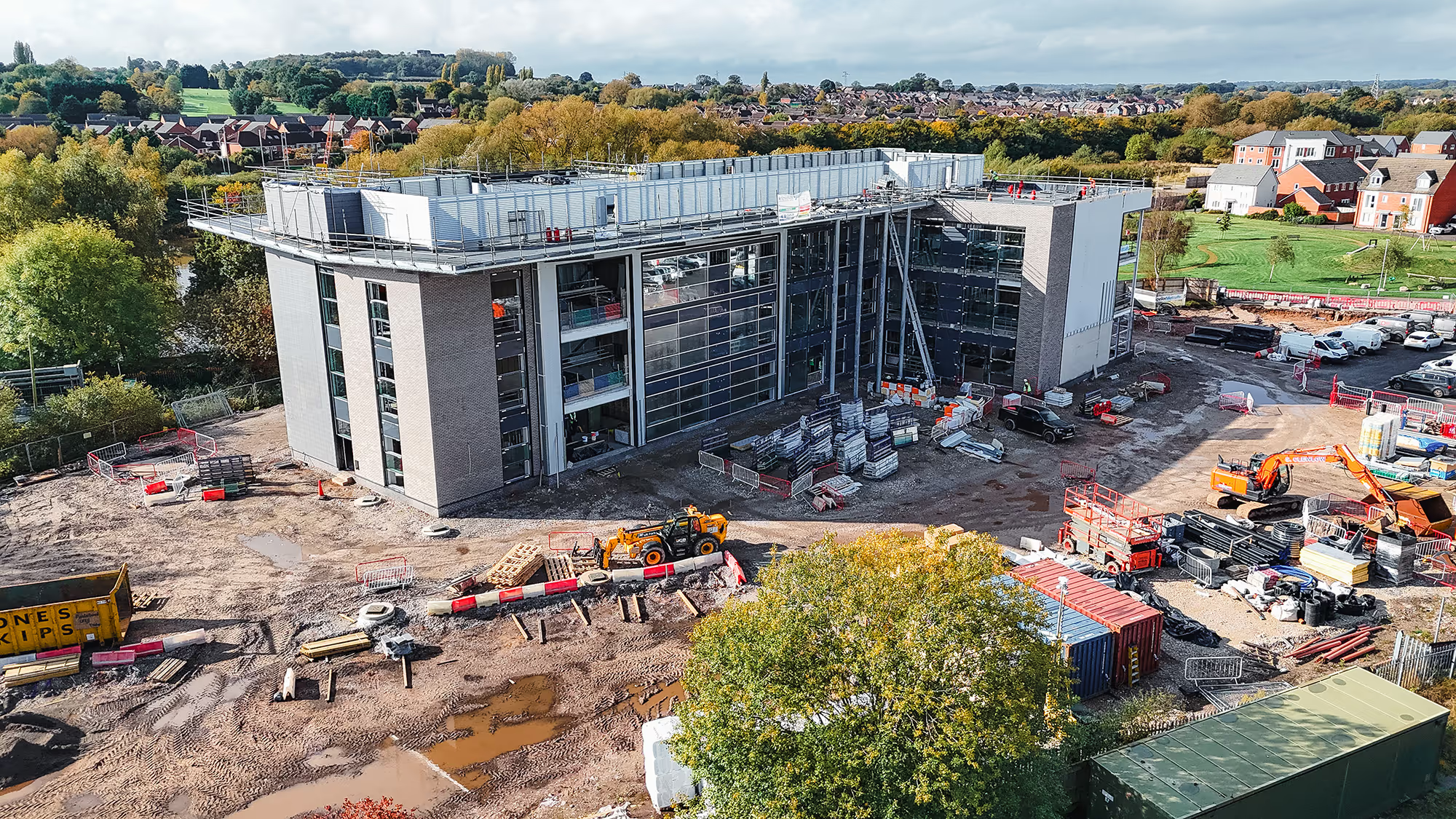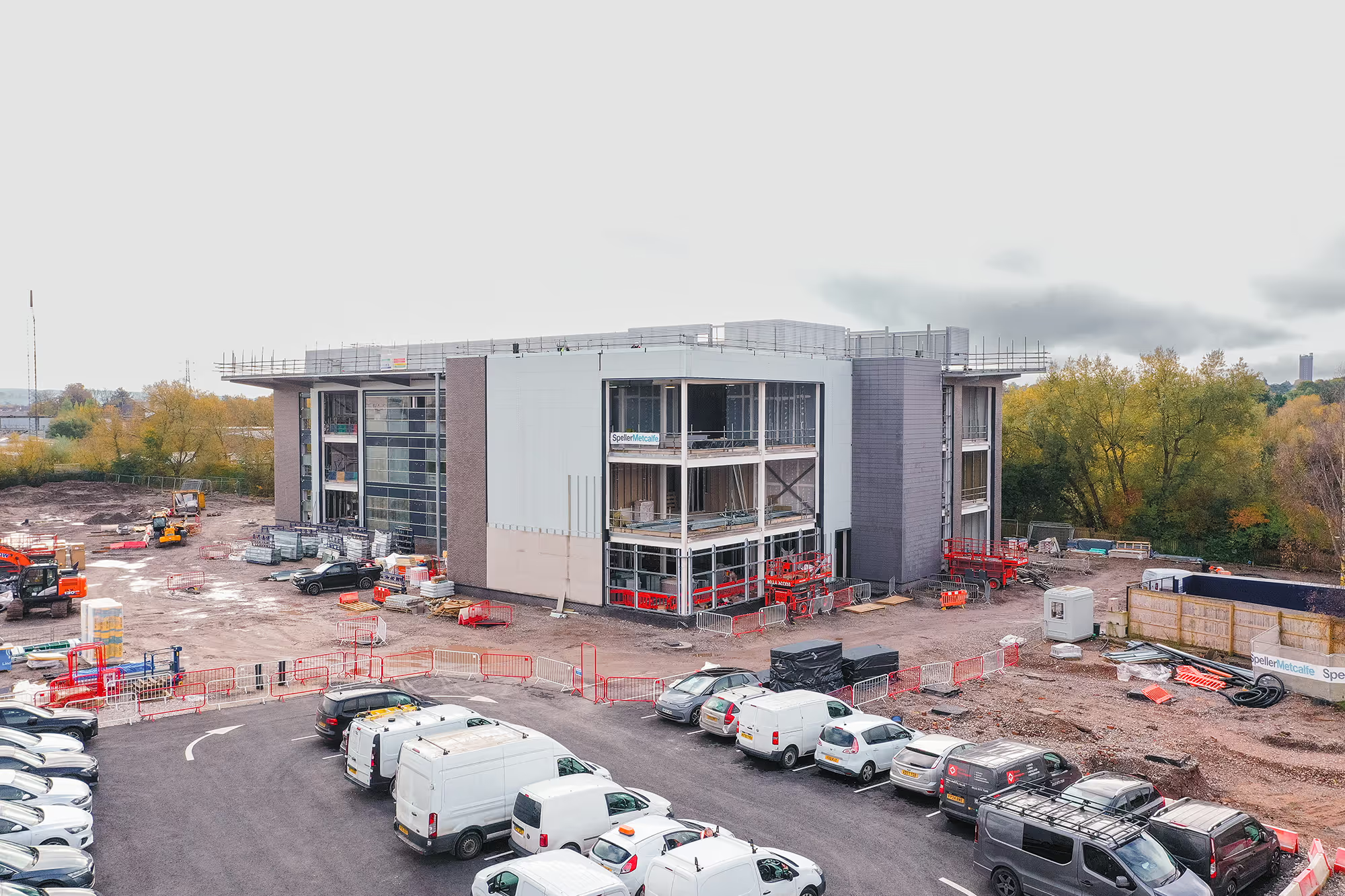Stoke-on-Trent and Staffordshire Institute of Technology

Project summary
The £22.5m Stoke-on-Trent and Staffordshire Institute of Technology is a brand new facility which offers high level training in advanced engineering, high value manufacturing, modern methods of construction, digital tech, health and life sciences.
Speller Metcalfe, the main contractor for the development, had originally gone to National Grid for the HV and LV substation connection work, but the timescale offered wasn’t fast enough to suit the construction programme. They turned to Zenit to help them get the job done as quickly as possible so the development could complete on time.
Nature of works
· LV and HV connections to substations required
· Zenit brought in as internal fit out began
· Replaced National Grid on the job due to scheduling issues
· Implemented strong communication and collaboration with client
· Redesigned programme and delivery schedule
· Expedited installation of cables and substations, then connected site to the grid
· Energisation achieved on site five months after appointment

A building of regional and national significance
The Institute of Technology is designed to bring key industry, education and research opportunities to the county and will see employers and academia working collaboratively to widen participation in targeted STEM areas. The consortium, led by NSCG, is supported by key education providers and employers.
That makes it a building of regional and national importance as we look to the future of the UK and the national economy. The project had to be finished and made operational on time – delays were simply not an option for Speller Metcalfe.
Slow connection times forced a change
One of the biggest potential problems on any large development is the time it takes to connect to the grid. It’s a sticking point that comes up time and again, but this time it had the potential to put the whole project in jeopardy.
Nick Reay, Senior Project Manager at Speller Metcalfe, said: “National Grid were originally down to undertake the works on site, but when they quoted Speller Metcalfe in August 2024, they potentially couldn’t undertake the works until August 2025, which would have meant the job finished late.”
Ryan Cambell, Managing Director at Zenit, said: “DNOs are limited in their capability and capacity. On this job, that lack of resource was clear with quotes of 12 months or longer for a connection.
“We’re licensed and heavily regulated to complement the DNO on their networks and speed up these projects.
"Our involvement allowed them to speed up the works and the connection massively. It’s a great example of how we can bring immediate value to a project.”

Navigating extreme programme pressure
We were appointed to the project in October 2024 as the internal fit out was beginning to get the site energised on time. The programme pressure was high and we worked closely with the Speller Metcalfe team to come up with innovative solutions to ensure a timely connection to the grid.
No two jobs are the same, and time to connection can never be guaranteed. Programmes need to be built with that in mind, and it’s vital to engage with companies like Zenit early for realistic expectations and construction programmes.
Nick said: “We needed to get the power on as quickly as possible. Zenit worked to minimise the impact of connection and reduced how late the site was connected.
“Zenit are experts in the field. We engaged with them and they understood our need to get the connection in quickly.”
Ryan said: “The moment you go underground, you start to deal with highways, local authorities, DNOs and other authorities. Programmes can start to be pushed back as no jobs, regions or people are the same. Different solutions are required on every site.
“That means the earlier you engage with a company like Zenit, the better. Utilities infrastructure is all about relationships and collaboration. We get on well with DNOs and understand how to work with them effectively. That speeds up jobs for our clients, even on projects that appear to be facing huge delays.”
Five months from appointment to energisation
Communication is vital on any project, and especially when timescales are so short. There was no way to succeed without close collaboration with the client, so our first order of business was to set up regular meetings where they could explain clearly what the issues were.
That accelerated design process began in mid-October. We achieved design and legal approval in three months, just before the end ofJanuary, compared to initial forecasts which targeted a completion date at the end of March.
Ryan said:
“Securing a two-month acceleration on a project is always pleasing. We knew where the pinch points in the design and legal process were, and made sure to warm up the right people at the right time so that they didn’t hold us up.”
“Once that was accomplished, we were able to mobilise on-site HV, get the substations down and put the terminations and LV in. We then tested and certified everything, followed by energisation on 26thMarch.
“That’s a total of two months to energise the site, and technically just six days after we were originally scheduled to achieve the initial legal approval based on our original service agreements!”
Completing works within five months of our appointment was an outcome that had not looked possible before Zenit sped everything up.

Working with Zenit was a “seamless experience”
Our smart planning and lean management model is designed to remove as much friction as possible from the utility infrastructure procurement process.
We ran the job tightly with the Speller Metcalfe team from day one. Ryan and Nick spoke several times a week to integrate our programmes and logistics. Aditionally, Speller supplied weekly drone footage which made it easy for us to look at the site logistically and mark up what needed doing and where.
Ryan said: “There was outstanding communication in all ways on this job. It meant no issues were dragged out and we could solve problems instantly as they arose.”
Nick said:
“Working with the Zenit team on site was a seamless experience. The communication was always clear and concise, and their commitment to deadlines kept the project on track.
“The Zenit process itself was extremely user-friendly, and the team took full ownership of any challenges, collaborating effectively with the wider project team to keep everything moving forward.”
More projects
Ready to start your next project?
Get in touch to speak with one of our knowledgeable team.


